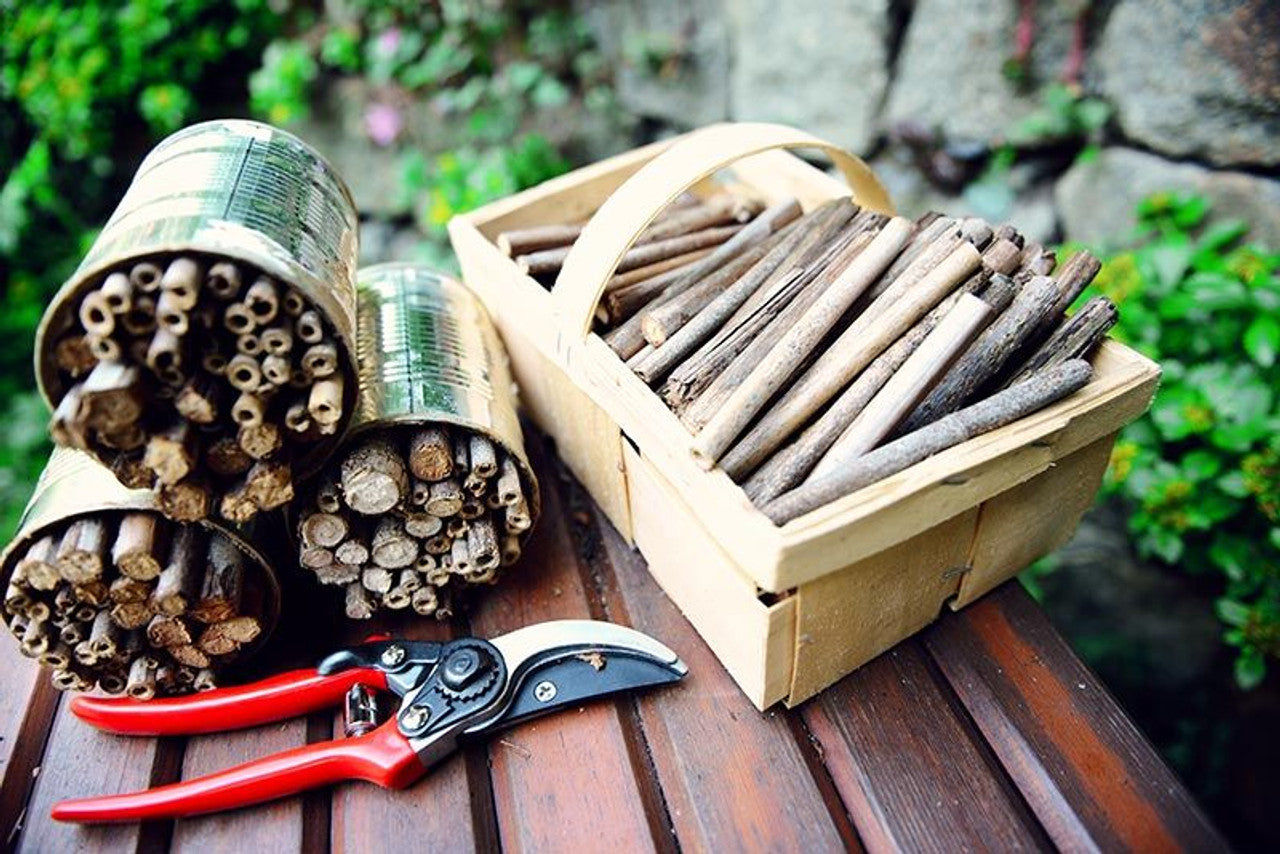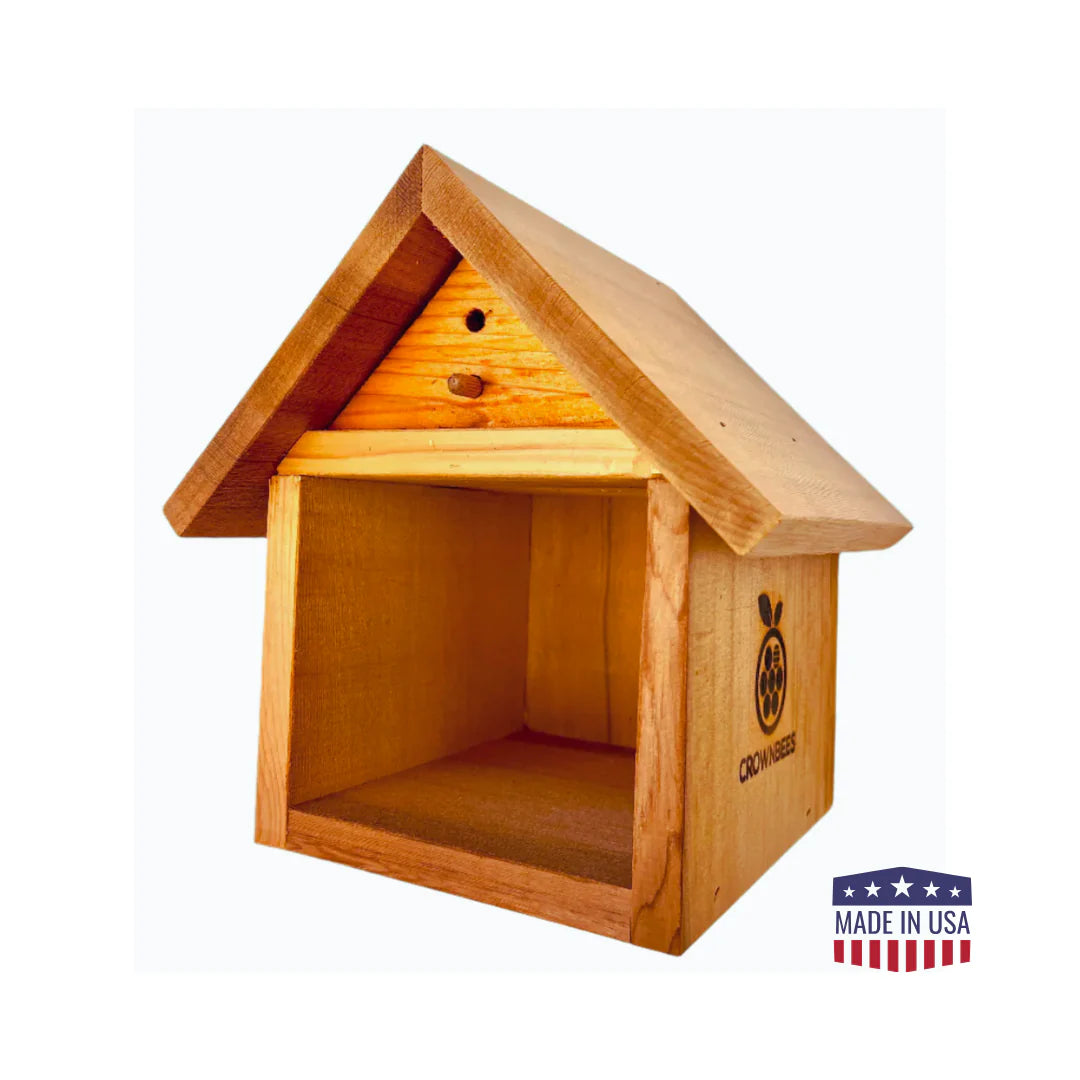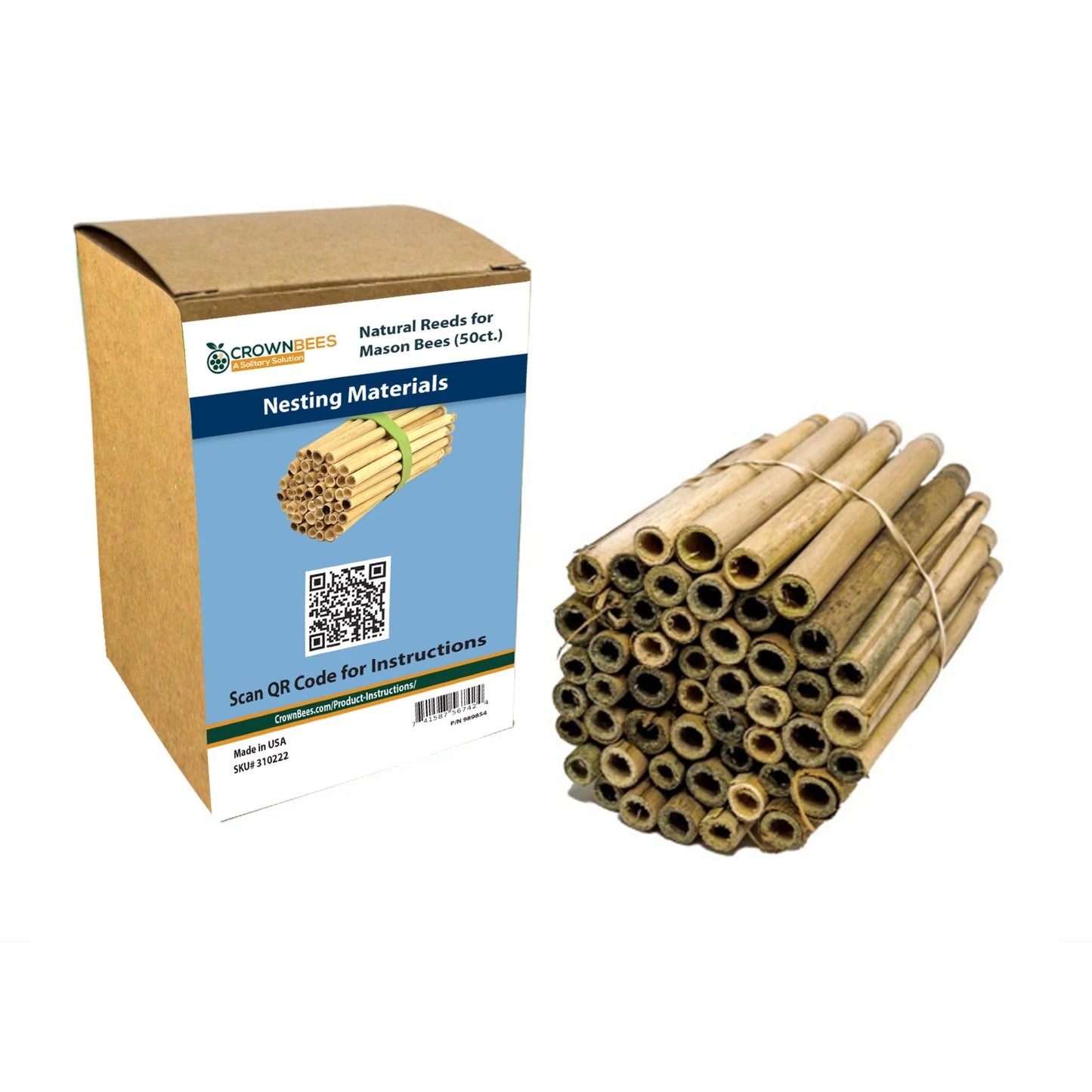
Blog post featured on Twinkl in its article "Why Are Bees So Important?"
Since you're reading this post, the chances are that you are already familiar with the concept of solitary bee houses and hotels. Solitary bees are important pollinators and a gardener's friend, and providing nesting habitat is a great way to help declining native bee populations - especially in the human environment.
We understand getting started can be a bit daunting! Countless gardening and home goods stores sell bee houses (insert shameless plug for Crown Bees' bee houses here), and there is no shortage of blogs and websites with step-by-step instructions on how to build one yourself. So, how do you know what to buy or make?
It may come as a bit of a shock since our business is solitary bee-raising supplies, but we love the idea of DIY bee houses! Building a bee house is a fun, engaging activity that benefits native bees that the entire family can enjoy. However, too many DIY instructions (and store-bought houses) do not provide clear guidance on best practices and maintenance. When not properly built or maintained, bee houses can become a breeding ground for pathogens and ultimately harm the insects we set out to protect.
Our goal at Crown Bees is to help people help bees. So we designed this guide to help you craft a bee house that suits your budget and design style and provide bees with a safe nesting habitat to thrive.
Pro Tip: You can also use this guide to help evaluate the quality of store-bought houses and nesting materials.
House/Hotel Design
The first thing you'll have to do is design the house. It can be as simple or elaborate as you'd like it to be. While there are no limits to design, there are some basic rules to follow when building the structure of a house:
Wood Houses: Natural, untreated wood is best. If you want to paint the house, make sure you allow plenty of time, about a month, for the paint to cure because the smell of wet paint or stain can repel bees. To promote sustainability, consider using recycled or waste wood. Avoid composite materials such as chipboard or particleboard, as they will disintegrate in the rain.
Container Houses: If woodworking isn't your thing, you can easily build a container house with items around your home. Some examples include milk cartons, plastic buckets, and cut PVC pipes. When designing, make sure you poke a few air vents in the sides or bottom of the container to prevent mold and provide an overhang to protect the nest materials from rain. To promote sustainability, consider repurposing old containers. Just make sure they are adequately cleaned and dried to remove any smells.
Pro Tip: If you're going to harvest and release bee cocoons in the future, it would be a good idea to build a cocoon hatchery into your design. Hatcheries protect cocoons from the sun, wind, rain, and predators.

Types of Nesting Materials
The solitary bees and wasps that will nest in your bee house are cavity-nesting, meaning they build their nests inside available nesting holes. The best way to protect bees from pathogens such as excessive mold, Chalkbrood, and pollen mites is to fill your bee house with bee-safe nesting materials.
Another thing to remember when collecting nesting materials is that different bee species use different diameter nesting holes. In general, spring mason bees prefer ≈ 8mm diameter holes, while summer leafcutter bees prefer ≈ 6mm diameter holes. Alternatively, place various sizes in your bee house to see what wild cavity-nesting species live in your area!
Below are some of our favorite types of nesting materials to use - feel free to mix and match to give your house a unique look!
Natural Reeds/Pithy Stems:
- Natural, plant-based reeds/stems are the most attractive to bees.
- Reeds can be store-bought or harvested from nature. Just make sure you harvest responsibly!
- Reeds should open easily for quick removal of cocoons.
- Most reeds have a natural node to seal the back end. If they do not, make sure you close the back before placing them in your house - clay is a natural substance that works as a suitable tube sealant.
- Avoid Bamboo: A commonly promoted reed for bee houses; however, bamboo is difficult to open, which could damage cocoons in the process and is typically too large of a diameter for many cavity-nesting bee species.
Pro Tip: Plant species with hollow or pithy stems that you can use as natural nesting materials are: Asters, Bee Balm, Phragmites, Cup Plant, Honeysuckle, Joe-Pye Weed, Raspberry/Blackberry, Sumac, Sunflower, and Wild Rose.

Cardboard Tubes + Paper Tubes:
- Paper tubes are the most economical choice of nesting materials.
- Lightweight and easy to open for quick removal of cocoons.
- Cardboard tubes can be reused; simply replace paper inserts each year.
- An alternative to purchasing paper tubes made explicitly for mason bees is paper straws. Just make sure you seal the back end of each straw before placing it in your hotel - clay is a natural substance that works as a suitable tube sealant.
- Avoid Plastic Straws: Plastic straws can't be reused, recycled, or broken down organically - adding to the waste problem.

Reusable Wood Trays:
- Come in a variety of sizes. Just make sure you check the dimensions of the trays before building your bee house to make sure they'll fit.
- These trays are long-lasting and reusable year after year! Sustainability points!
- They are easy to open and clean each year.

Wood Nest Blocks with Paper Inserts:
- You can use untreated lumber or old tree stumps, standing snags, and downed logs that are at least 6 inches thick.
- To attract a variety of species, drill holes of varying sizes - 2 mm to 10 mm are ideal.
- Make sure to take a piece of sandpaper and smooth out holes (rough edges can harm the fragile bees).
- Be sure not to drill all the way through the block because the holes must have a sealed back end.
- Drilled blocks don't open, which allows pathogens to take hold. If you use drilled blocks, add paper inserts so you can harvest cocoons in the fall and replace the blocks every couple of years to avoid pathogen spread.
Pro Tip: Bees use visual cues to help orientate themselves to their nests. Include a few colorful art objects with the nesting materials or paint a design on a handful of nesting holes to help the females easily locate their nests. Just make sure you allow plenty of time for the materials to air out before bees emerge. Otherwise, the scent may deter the bees from nesting.

Location & Installation
While bees don't care how expensive their house is, they're picky when it comes to their home location. Houses should be:
- Mounted to a solid object (like a post, house, or fence). Bees don't like swinging in the breeze!
- Placed in a location facing south or southeast to receive direct sunlight in the morning. They are cold-blooded and need the morning sun to start moving.
- Near open blooms and a mud-rich clay. Many wild bees only fly about 300ft searching for nectar and pollen, and some species, like mason bees, use mud-rich clay to build their nests. Place the house near flowers and a mud-rich clay source, or risk your bees flying off in search of a better home.
- At eye level (≈5ft), without any vegetation blocking the entrance. The elevation protects them from predators and is the perfect height to watch the bees at work.
- In a location free of pesticides. Pesticides are a primary driver of bee declines worldwide!

Maintain & Clean
Maintenance is often the most overlooked part of having a bee house. Routine maintenance is just as essential as proper design! If you don't clean and maintain your bee house and nesting materials, they can harbor pests and diseases, putting local bees in more danger than if there was no house at all.
Throughout the summer, monitor for the following problems:
- Moisture in the bee house or nesting materials - You may need a broader roof on your bee house.
- Ant infestations - Can be prevented with AntCant or other ant deterrents.
- Evidence of predatory birds - Bird guards can help with this problem.
- Spider webs - Indicates the nest location may be too dark.
We have many resources on the Crown Bees website to help you learn about the different pests and diseases you may find in your bee house and best practices for harvesting and cleaning your cocoons and nesting materials. Check them out to help you maintain healthy nesting habitats for your local bees.

Creating nesting habitats for our wild bee populations is a fun and rewarding activity for the whole family (and bees). Kids, in particular, love the gentle nature of these solitary bees. We hope this guide will help inspire you to craft a bee house that you'll be proud to show off and that will act as a refuge to wild bee populations. And remember, if you ever need any help, we're here to help!
Have Fun and Happy Pollinating!
P.S. We'd love to see your DIY creations! Feel free to share and tag us on social media!


